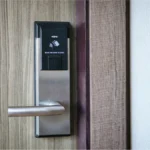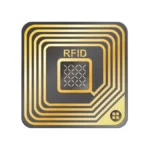Radio Frequency Identification (RFID) technology is surprisingly useful in libraries. RFID in libraries is a unique code identifier for books or CDs and can be used for fast and efficient circulation processing and inventory management.
The utilization of RFID in libraries is inevitable as the development trend of anti-theft systems based on barcode technology to build a new automatic and intelligent management mode.
RFID in libraries is useful for simplifying the process of borrowing books to increase reader satisfaction.
Also Read
The RFID management system of the library provides readers with more convenient and fast intelligent services such as book borrowing and returning, inquiry, etc.
Even RFID in the library also improves the library management mode, improves work efficiency, reduces the labor intensity of managers, and provides a complete solution for the library application field.
Table of Contents
Applications of RFID Utilization in Libraries

The development of RFID innovation progresses the speed of information collection, basically realizes the quick, effective, and secure perusing and capacity of data in the preparation of exchange, and has the special personality of the data carrier.
RFID innovation has wide applications in the library field. Compared with the conventional standardized tag framework, the RFID library administration framework has numerous focal points.
1. Simplify the process of borrowing and returning books
RFID can randomly place many books within the reading and writing range of the reader to achieve borrowing or returning at once to greatly increase efficiency.
2. Optimizing loan management
The RFID system enhances the current library management system by linking the negligence prevention system with the book circulation management system.
With RFID, the history of each book entering and leaving the library can also be recorded, to match the history of borrowing and returning books.
3. Book inventory automation

Relying on manual book inventory work, especially book inventory on bookshelves, is too bulky and inefficient.
RFID has the capabilities of non-contact, long-distance, fast reading, and multiple labels at once, making inventory work fast, accurate, and efficient.
In addition, by using RFID technology, it is easy to find books that are not on the shelf or misplaced on the shelf.
Staff can easily perform book inventory, greatly saving manual labor and material resources.
4. Realizing overall digital management
In addition to books, CD-ROMs, and collection treasures, other aspects of library management also need to be digitized, such as reader management, administrative management, small consumption, and so on.
Traditional management is time-consuming inefficient, and very inconvenient for readers and librarians.
Through RFID technology, these links can be effectively digitized to realize the overall digital management of the library.
5. Improve reader satisfaction
The conventional library administration framework is wasteful in borrowing and returning books. You may have to hold up for a long time, and when it is your turn, you may experience a few issues, such as misreading data, bar codes not being studied, etc. This is an awful perusing experience.
This is an appalling perusing involvement. In any case, the RFID library administration framework will bring you a superior encounter so that you do not have to hold up in line, more helpful and clever.
That is the various kinds of RFID utilization in libraries that have been applied. Hopefully in the future RFID technology in libraries will also continue to innovate to further assist medical work.
Make sure the RFID product that you use has been tested and has a certificate from Type Approval Certification Services for ICT Products in your country before being distributed to the market.











